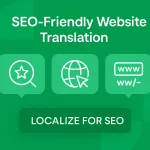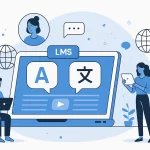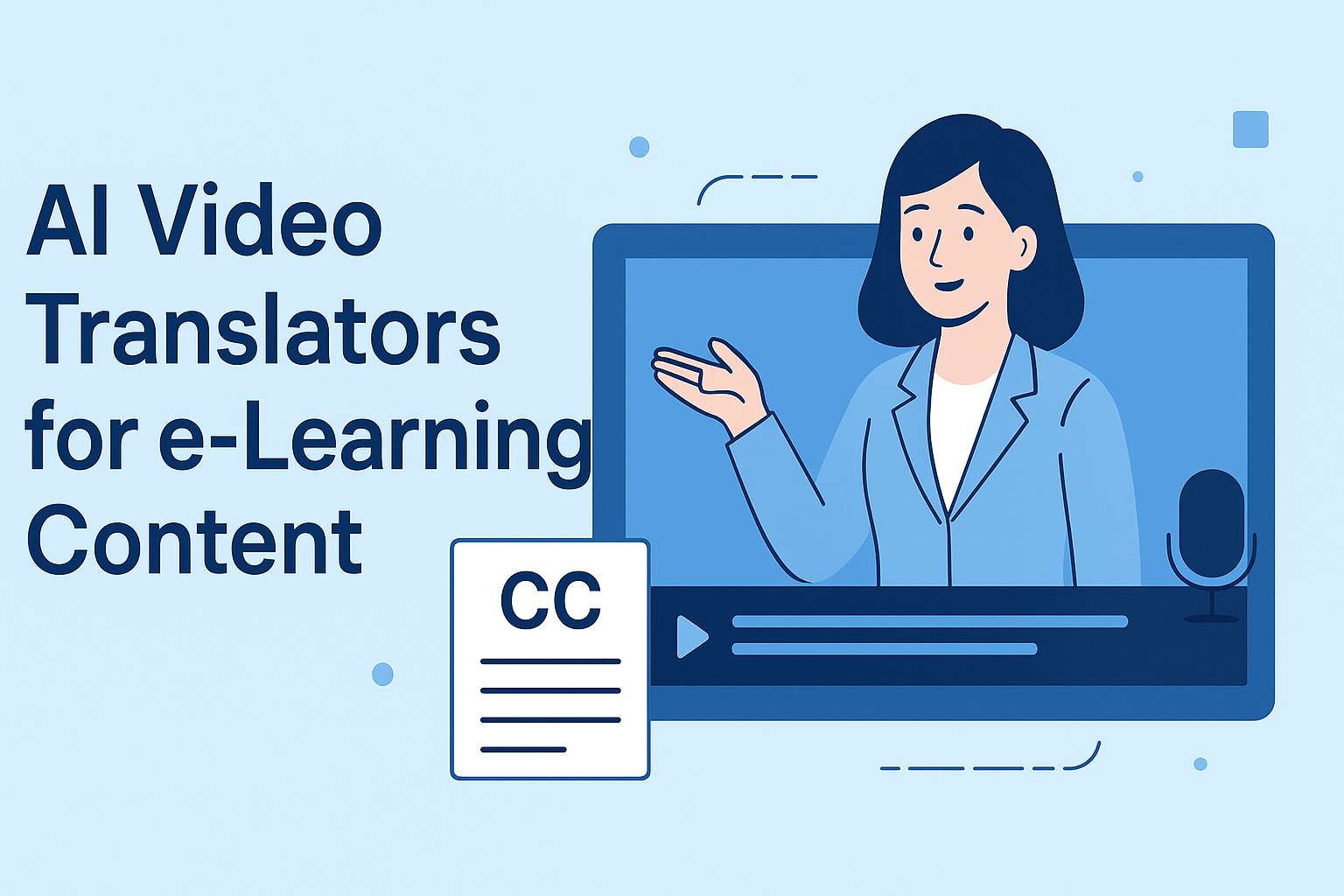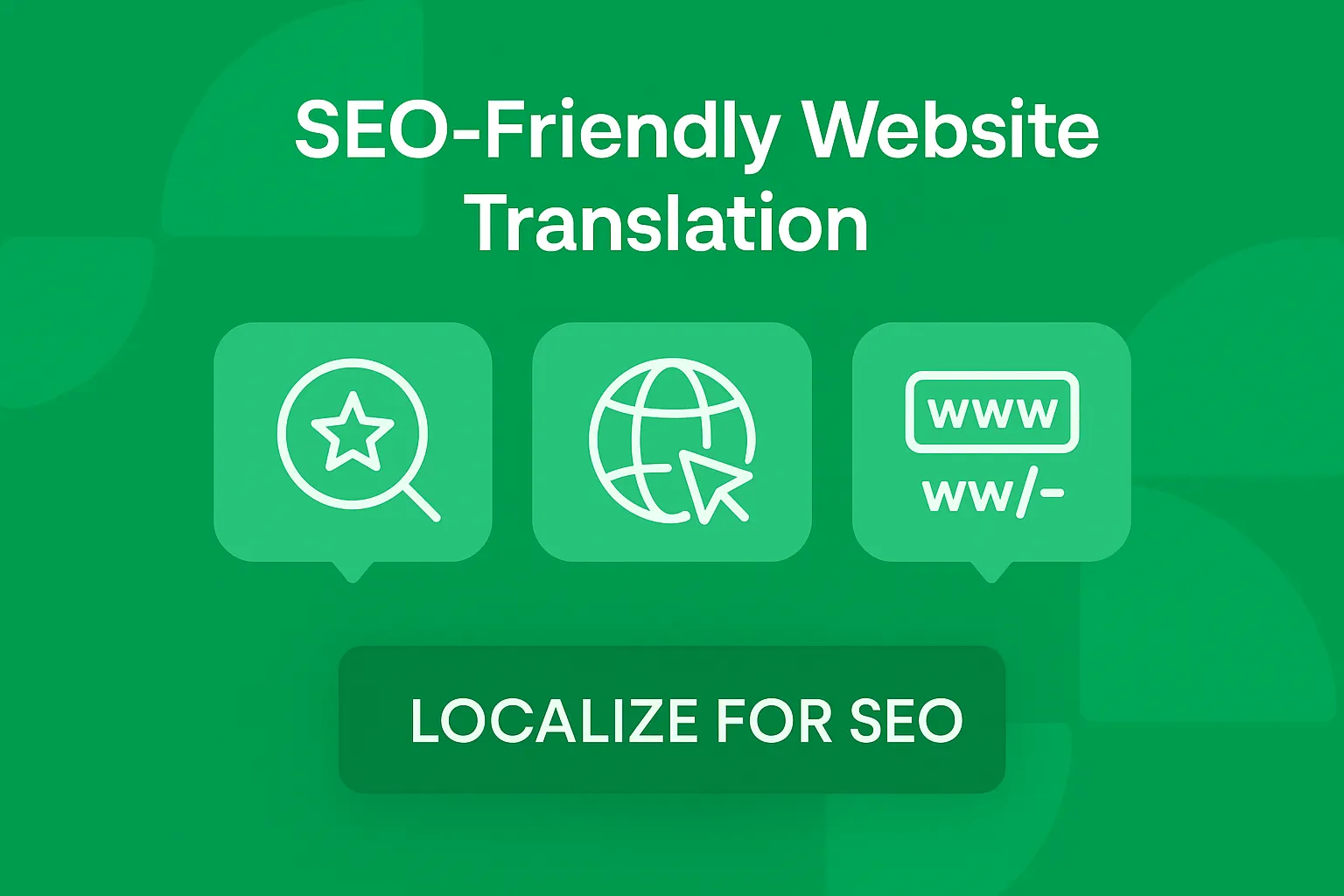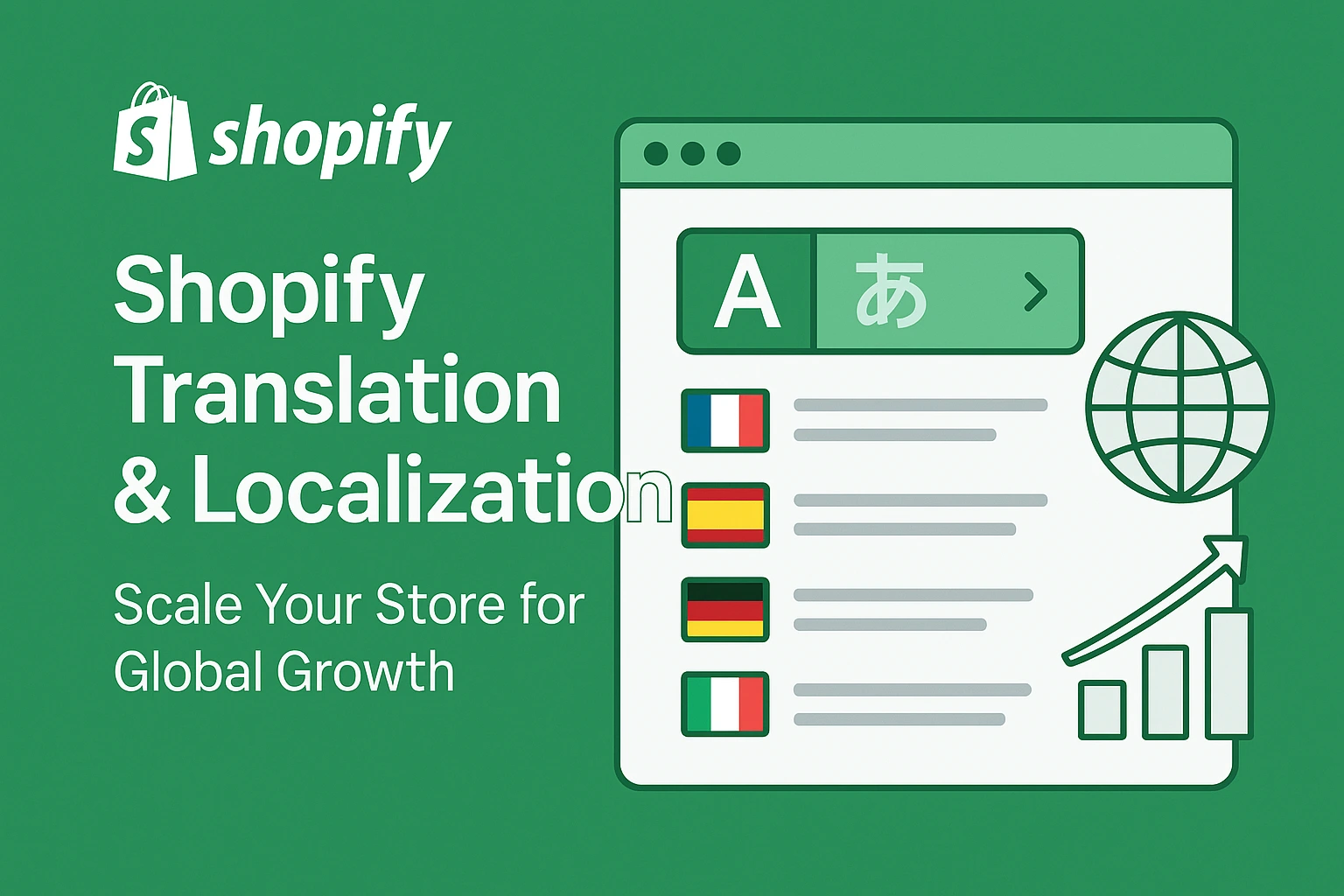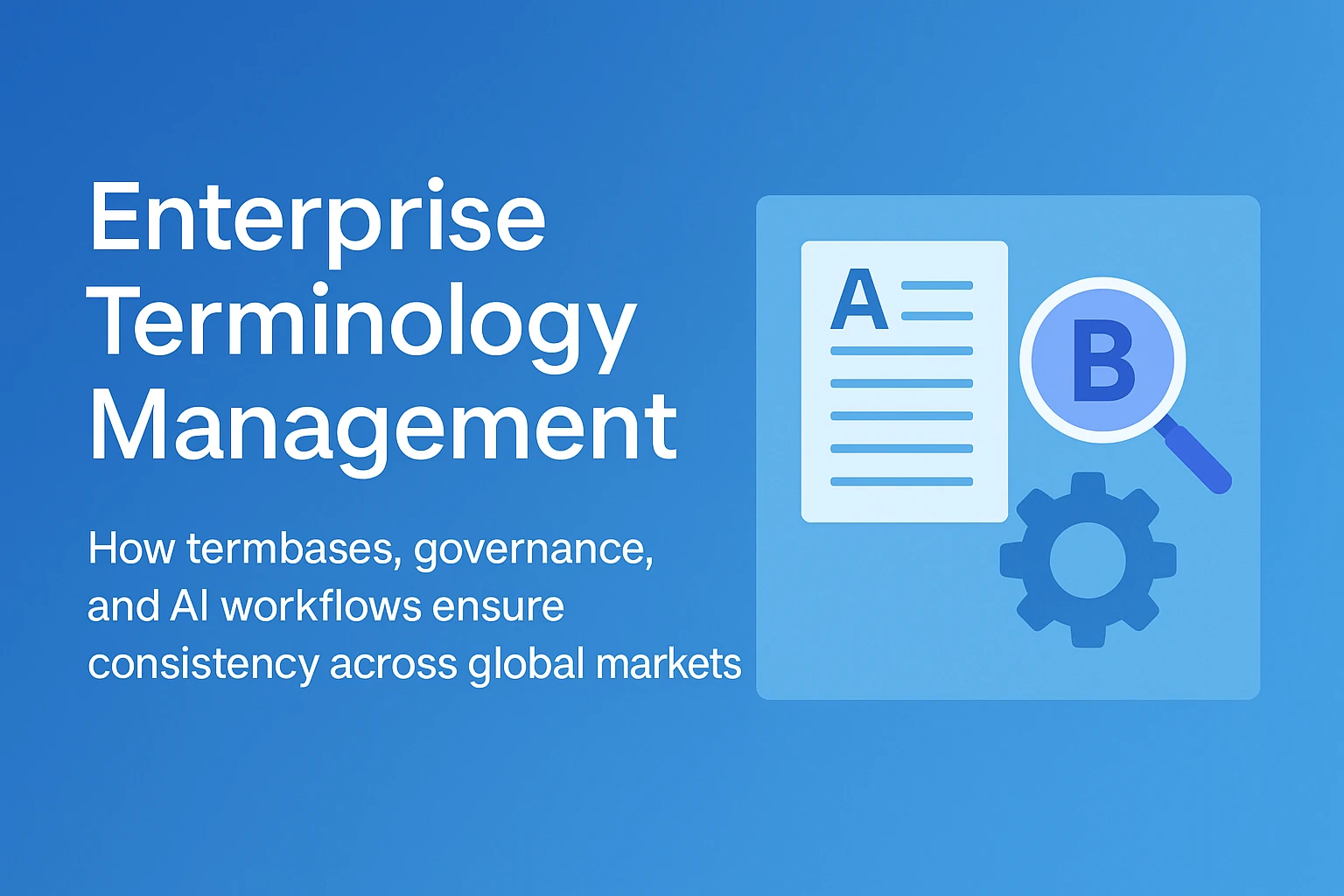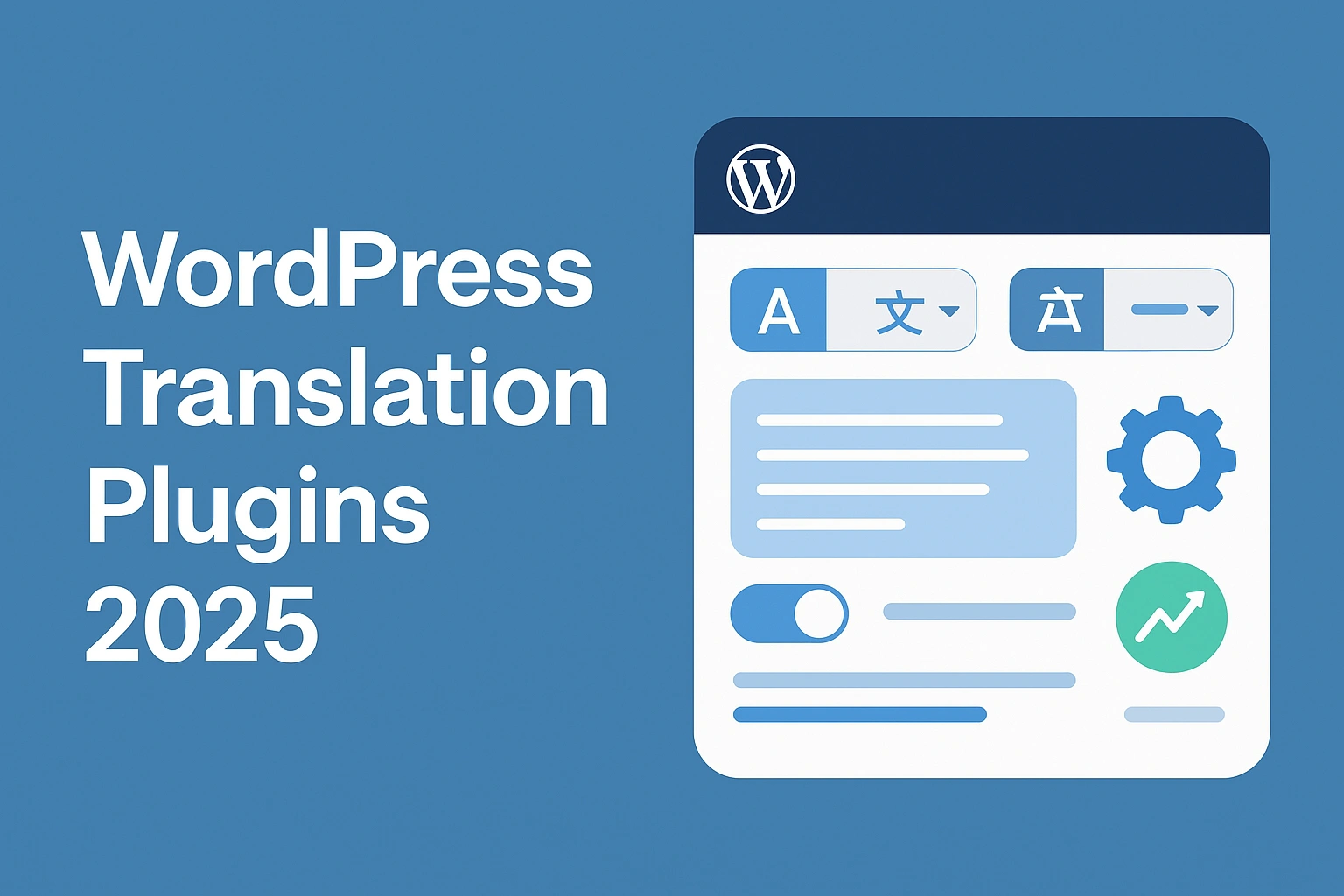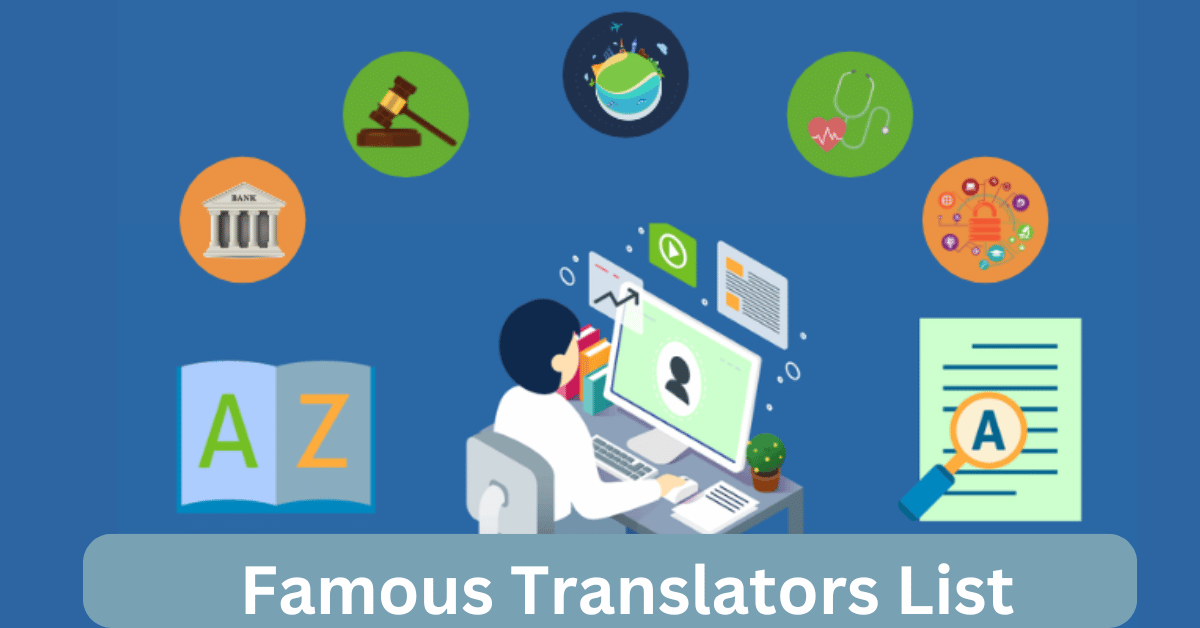E-learning platforms face a significant challenge in going international: how to scale multilingual course delivery without exploding budgets, missing deadlines, or sacrificing learner engagement.
AI video translation is the simplest, most efficient answer to this problem. Manual subtitling/dubbing can’t keep up with the scaling of the platform’s expansion, whereas AI video translation can not only keep up, but can also boost ROI.
AI translation combines technologies such as speech-to-text, machine translation, and synthetic voice-over, resulting in faster turnaround, broader reach, and improved learner satisfaction.
This article dives deep into the topic, highlighting every benefit this can offer your platform to reach newer heights with multilingual outputs.
What Is an AI Video Translator—and How Does It Work?
At its core, AI translation is similar to manual subtitling and dubbing. The AI systems hear the videos, identify the words, translate them to the desired language, and output them as instructed.
AI videos are very reliable in translating at scale, fast, and accurately. It has 3 core components: speech recognition, subtitling, and translating.
Here’s what the workflow looks like:
ASR(Speech recognition) → MT(Machine translation) → Subtitles → LQA → Review workflow.
This structured approach helps keep everything in order, minimizes mistakes, and boosts productivity.
The Technology Behind AI Video Translation
AI video translation requires an assortment of transcription, translation, and synthesising technologies. They then take turns to
- ASR engines: For instance, open-source models such as Whisper or commercial offerings from Azure Speech ensure high word recognition accuracy, especially for training videos with clear audio.
- Machine translation: Engines like DeepL utilise Neural Machine Translation (NMT) to deliver rapid, high-quality output.
- TTS / voice-cloning: Services such as Amazon Polly provide realistic synthetic voices. Voice-cloning further ensures brand consistency, tone match, and multiple language support.
- LLMs / NLP frameworks: Large language models support glossaries, term substitution, context-aware translation, and post-editing assistance.
From a security and privacy perspective, enterprise buyers must look for model isolation (no shared cloud buckets), on-prem or enterprise cloud deployment options, encryption at rest and in transit, and compatibility with GDPR/ISO standards.
AI vs Human Video Translation: What’s the Difference?
| Factor | AI-only workflow | Hybrid AI + Human (recommended) |
| Scalability | Very high: dozens of languages, rapid turnaround | High: combines machine speed with human review |
| Cost per language | Lowest, but risk of errors | Moderate: slightly higher cost, higher quality |
| Tone & cultural nuance | Often generic, can mismatch tone or idiom | Human review ensures tone is appropriate and culturally resonant |
| Turnaround time | Fastest | Slightly longer due to the review step |
| Use case suitability | Bulk training videos, less critical content | High-stakes e-learning: compliance, onboarding, external audiences |
Practically speaking, AI automates most of the data processing, while human supervision is mostly for editing in the cultural contexts and nuances.
Why AI Video Translation Matters for e-Learning Businesses
The global e-learning market is growing at approximately 14% CAGR(Compound Annual Growth Rate). [Source: GMI]
This growth is boosted thanks to the integration of AI technologies in the field. As translated materials become more and more available, learners across the globe now prefer them in their native languages(L1). This helps with increased engagement and better retention of knowledge.
A study done by translators.com shows that learner retention rates can increase from 25% up to 60% when training is delivered in learners’ native languages.
So, it’s really no wonder that the demand for translated e-learning materials is growing exponentially. And by extension, AI translation, being the most efficient measure for this, is also experiencing a surge in demand.
Expanding Reach and ROI in Global Training Programs
AI video translation is a blessing for the e-learning industry. Demand for translation is now higher than ever, and it will keep increasing. However, keeping the entire workload manual is simply not possible.
However, that does not translate to just delegating the entire task to an LLM. A hybrid approach, such as MTPE, is necessary for quality control and keeping risks minimal. This way, enterprises can boost their ROI, globalize, and keep their brand voice intact throughout the multilingual content pipeline.
Reducing Costs and Turnaround for Course Localization
A report done by Geckodub states that integration of AI in the translation workflow reduces localization cost by 90%.
And this is the result of the efficiency that the AI systems provide.
A complete human workflow would require separate experts in subtitling, translating, voice acting, and proofreading. Not to mention the time it requires. However, AI video translation, on the other hand, can cut this with just the system and a few rounds of LQAs.
AI Video Translation Workflows for Professional e-Learning
The AI video translation workflow is a long and multilayered pipeline. This requires multiple modes of AI integration and ends with multiple rounds of LQAs.
Here’s a simplified process of what that could look like:
Video ingestion:
The source video (MP4, MOV, etc) is uploaded into the platform.
Speech recognition (ASR):
The system then transcribes the original audio track into a time-coded transcript.
Machine translation (MT):
The transcript is translated into target languages, optionally enhanced by translation memory or custom glossaries.
Subtitle generation or voice-over creation:
Subtitles are placed into.SRT/WebVTT format or synthetic voices (TTS) are applied to generate dubbed tracks.
Quality assurance and human review:
At Circle Translations, we add human review (linguistic, timing, voice-over QA) before delivery.
Format and LMS integration:
Deliver files in formats compatible with LMS platforms (SCORM, xAPI, SRT, etc).
By delegating the bulk of the workload, AI video translation significantly reduces the turnaround and cost.
Subtitle vs Dubbing: Which Format Suits Your Course?
Sub/Dubs both are very valid modes of instruction, but at the end of the day, it all comes down to your time, budget, and client expectations. Balance is the key.
Here’s a table to help you cut through the noise and find out what suits your needs the best:
| Format | Approx. Cost | Turnaround | Engagement Level | Best Suited For | Strategic Considerations |
| Subtitles | Low – ~40–60% cost savings vs. dubbing | Fast — hours to 1 day | Moderate | Internal training, onboarding modules, compliance learning | Scales efficiently; ideal for rapid global launches |
| Dubbing / Voice-over | High – 2–3× subtitle cost (depending on language scope) | Slower — 2–5 days | High | External/brand-critical content, marketing or customer-facing learning | Greater localization depth; enhances learner trust and engagement |
Supported Formats and LMS Integration
The one thing enterprises struggle the most with while globalizing is, with modes of formatting. Different markets prefer different formats. So, before purchasing an AI video translation service, make sure your preferred formats are in line with the most widely available industry standards.
Here are a few examples:
- Video file types: MP4, MOV, AVI (source and target).
- Subtitle formats: SRT, WebVTT.
- Packaging formats: SCORM, xAPI (Tin Can), LTI packages.
- LMS compatibility: Platforms such as Moodle, TalentLMS, LearnWorlds, etc.
- Captioning & DTP support: for languages with right-to-left scripts or special typography (Arabic, Hebrew).
Human Review for Quality Assurance
To ensure compliance, security, and liabilities, human oversight is still an absolute must. After the AI processes are done, many rounds of QAs are done, and they’re done multiple times for absolute certainty before the final handover.
Let’s look at the quality assurances done within the AI video translation pipeline:
- Linguistic review: native speakers verify translation tone, terminology, and cultural adaptation.
- Technical review: check subtitle timing, sync, video embedding, and voice-over quality.
- Branding review: ensure voice style, tone of deliverables align with brand voice.
- Accessibility review: ensure captions/subtitles meet standards (e.g., hearing-impaired, caption colour, readability).
- Final client sign-off: revision loop, export final formats, deliver with version control.
Measuring Quality & Accuracy in AI Video Translation
Let’s learn some key steps for measuring quality and accuracy in AI video translations. It will help you understand the value of AI video translation quality.
What Affects AI Translation Quality for Video?
Before understanding how AI video translations’ quality is judged, it’s important to know the minute details of what actually affects the learner’s experiences.
- Audio quality: background noise, multiple speakers, and overlapping speech decrease ASR accuracy.
- Accent/dialect variance: Non-standard accents may reduce recognition.
- Domain content and jargon: STEM, compliance, and legal training videos contain dense terminology.
- Speaker changes and timing: complex speaker transitions with on-screen visuals need careful alignment.
- Language pair complexity: some target languages, such as agglutinative, right-to-left script, require specialised handling.
Metrics Used for Quality and Accuracy in AI Video Translations:
Word Error Rate (WER)
It’s the standard measure for automatic speech recognition accuracy. It calculates the percentage of words incorrectly transcribed by the system.
Lower WER indicates higher fidelity to the original audio. In practice, enterprise-grade ASR systems aim for a WER below 10%, which helps maintain clarity in subtitled or dubbed content.
BLEU (Bilingual Evaluation Understudy):
BLEU provides an objective assessment of machine translation quality. These scores compare AI translations against reference human translations, where higher scores reflect closer alignment.
In e-learning, a BLEU score above 0.7 generally indicates translations that are accurate enough for professional training content without requiring extensive post-editing.
LQA (Linguistic Quality Assurance) scores:
This metric evaluates translations along multiple dimensions, including grammatical correctness, tone, terminology consistency, and localization accuracy.
Scores are usually reported on a multi-point scale, allowing organizations to track improvements over time and benchmark content across languages.
DQF (Dynamic Quality Framework):
It is a more comprehensive scoring model that consolidates various quality indicators such as accuracy, style, and localization.
By aggregating multiple dimensions, DQF provides enterprise buyers with a single, actionable score to assess overall translation effectiveness.
Continuous Improvement: Training Models on Corporate Data
One of the biggest strengths of AI translations is that, with each cycle, all the previous data is fed back to it and trains the models. So, things like custom glossaries and translation memories go through more secure training loops, essentially making the model better each time.
Security & Compliance in AI Video Translation
Corporate training assets often include confidential information, such as internal policies, employee data, product launches, and compliance courses. Suffice to say, risk minimization is a key requirement in AI video translations.
Key criteria include:
- GDPR compliance, ISO 17100, SOC 2 accreditation (or equivalent) for data handling.
- NDA enforcement, role-based access controls, secure file transfer (SFTP/HTTPS), encryption at rest and in transit.
- Model isolation: ensuring your video/audio files are processed in a dedicated environment (not pooled with consumer-grade workflow).
- Deletion policy: post-delivery, files can be purged or archived per client instruction.
Data Protection for Recorded Training Material
Training data is often sensitive and carries liability risks. Appropriate safety measures are absolutely necessary throughout the training workflow.
Measures enterprises use to ensure data safety:
- Encrypt video/audio files during upload and storage.
- Limit access only to authorised linguists and reviewers.
- Maintain an audit trail of file handling and revision history.
- Provide secure deletion or anonymisation options after project completion.
Why Choose Circle Translations for AI Video Translation
Selecting a partner for multilingual video localisation is like choosing an operational engine for your global training strategy. Circle Translations delivers a purpose-built AI video translation workflow designed for enterprise L&D teams, e-learning platforms, and organisations scaling multilingual training across regions.
Here’s what sets us apart:
Hybrid AI + Human Precision for Training Content
Our workflow blends advanced ASR, MT, and TTS technology with human linguistic expertise. AI accelerates transcription and translation; human reviewers ensure tone accuracy, cultural fit, technical terminology, and compliance alignment.
Native Linguists Across 120+ Languages
Every project is handled by linguists specialised in your domain, whether it’s compliance, HR, medical, technical, manufacturing, cybersecurity, financial services, or more.
This ensures your training content is not only linguistically correct but contextually accurate for each audience.
Enterprise-Grade Security & Compliance
Your training videos often contain confidential information. Our infrastructure is built to match enterprise risk requirements:
- GDPR-aligned workflows
- ISO 17100-compliant processes
- NDA-backed access control
- Encrypted file transfer & storage
- Model isolation to ensure data never trains public AI models
LMS-Ready Delivery With Zero Rework
We don’t just translate your video; we make it usable. Whether your organisation uses Moodle, TalentLMS, LearnWorlds, Cornerstone, or custom LMS systems, we deliver SCORM, xAPI, WebVTT/SRT, and MP4/MOV formats ready to plug in immediately.
No need for reformatting, file fixing, or compatibility issues.
Scalable Capacity for Global Rollouts
Whether you are localising 10 videos or 1,000+ per month, our production infrastructure supports continuous large-volume workflows. Dedicated PMs coordinate linguists, reviewers, and engineering teams to meet aggressive timelines without sacrificing quality.
Transparent Pricing and Faster ROI
Our AI-powered workflow reduces costs by 40–60% compared to manual dubbing and subtitling, while translation memories lower costs further over time.
You get predictable cost structures, enterprise invoicing, and clear KPIs measuring the ROI of localisation.
Strategic Support for L&D and e-Learning Teams
We serve as an extension of your training function, advising on format (subtitles vs. dubbing), accessibility, terminology management, content governance, and continuous improvement.
This is why enterprise clients describe us as a strategic partner, not a vendor.
Summary
The scale of the e-learning industry is growing globally; manual workflows simply can’t keep up anymore. AI video translation is the most efficient fix. This way, enterprises can globalize with measurable ROI.
AI integrations’ biggest feature is its hybrid model; automating transcription, translation, subtitling, and voice-over while preserving quality through human oversight. This bilayered approach keeps the brand value intact, alwhile keeping a steady growth.
The best learning outcomes are often directly linked to training in the learner’s native tongue. So, companies are looking for quality materials in their regional languages. And to meet that demand, AI integration is crucial.
To keep ahead of your competition, choosing the correct partner with appropriate certifications and prestige is also a necessity. So, in globalizing your platform and keeping your voice intact, AI integration with the right partner is the best, most efficient solution.
Frequently Asked Questions
How accurate are AI video translators for e-learning?
Modern ASR and MT engines deliver strong baseline accuracy, but true training-grade quality comes from hybrid workflows. With AI + human QA, accuracy typically reaches 85–95%, even for specialised training topics or industry terminology.
Can AI translate both subtitles and voiceovers?
Yes. AI video translation supports subtitle creation (SRT/WebVTT) and synthetic voice-over using natural-sounding TTS or voice-cloning.
Circle Translations ensures tone, pacing, and terminology are reviewed by native linguists before final delivery.
Is AI video translation secure for internal training videos?
Yes. Provided you work with an enterprise-ready provider. Encrypted file handling, strict NDA-only access, GDPR-aligned workflows, and isolated AI models are the industry standard, ensuring sensitive training assets remain fully protected.
What file types are supported for AI video translation?
Most tools work with standard video formats such as MP4, MOV, and AVI, and output industry-standard subtitle files like SRT and WebVTT. For e-learning, SCORM and xAPI packages can also be generated when required by the LMS.
How long does it take to translate a 10-minute video?
A typical 10-minute module can be processed in a few hours. AI handles transcription and translation quickly, and human reviewers refine terminology and timing. Most teams receive same-day delivery for subtitles and next-day delivery for voice-over.
What are the costs for AI video translation?
Costs vary depending on languages and format. Standard pricing ranges from €0.08–€0.13 per word or a per-minute equivalent for video-based pricing. Voice-over, multiple speakers, or technical subject matter may increase the overall rate slightly.




